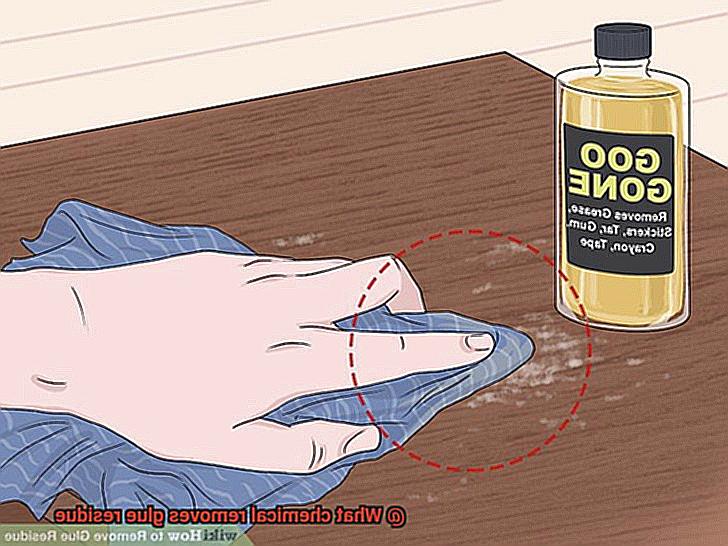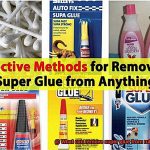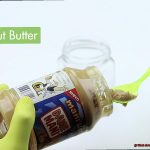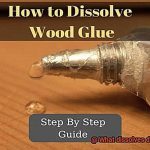Picture this: you’ve just finished a DIY project, admiring your masterpiece, only to be confronted with a stubborn, sticky mess of glue residue. Frustration takes hold as you resist the urge to forcefully pry it off, fearing damage to your beloved belongings. But fear not, my friends. I’m about to reveal the wondrous solution to this age-old problem: the ultimate chemical that will effortlessly banish glue residue forever.
Ever wondered about the magical substance that can make sticky messes disappear? Brace yourselves for a mind-blowing revelation as we embark on an exciting journey to uncover the mystery behind it all. As an expert in all things sticky, I’m thrilled to guide you through the world of adhesive residue and how to conquer it like a pro.
In this blog post, we’ll dive deep into the intricacies of glue residue removal and shine a spotlight on the mighty chemical that holds the power to dissolve even the stickiest situations. We’ll explore its scientific sorcery, understanding its remarkable properties and how it interacts with different surfaces.
But wait. There’s more. We’re also going to unleash a treasure trove of tips and tricks, revealing natural alternatives that work wonders in sticky circumstances. No more resorting to hair-pulling or exasperated sighs or endless scrubbing marathons. Armed with our newfound knowledge, you’ll be ready to vanquish pesky glue residue with ease and finesse.
So whether you’re dealing with remnants of a craft project, stubborn stickers on household items, or simply seeking a magic solvent to restore your belongings’ former glory – stick around. Together, we’ll unlock the secret to living in a glue residue-free world and equip you with everything needed to conquer those persistent adhesive foes once and for all.
Acetone: The Most Common Chemical for Glue Removal
Contents
When it comes to bidding farewell to stubborn glue residue, one chemical stands out from the rest – acetone. Known for its versatility and effectiveness, acetone has become the go-to choice for removing glue residue from a variety of surfaces.
In this article, we will delve into the reasons behind acetone’s popularity, its working mechanism, and essential tips for safe and efficient usage.
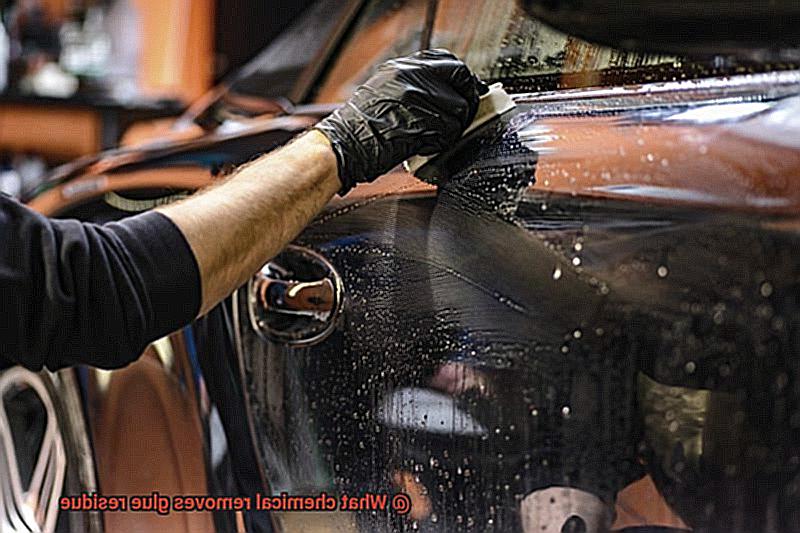
Acetone: The Swiss Army Knife of Glue Removal:
Acetone is a colorless liquid that possesses a distinct sweet smell.
Found commonly in nail polish removers, paint thinners, and household cleaners, this multifaceted chemical has earned its reputation as the most common solution for glue removal.
The Magic of Acetone:
Acetone works wonders by dismantling the adhesive properties of glue, rendering it effortlessly removable or soluble. This potent solvent effortlessly penetrates the glue, weakening its bonds and facilitating easy removal.
Its efficacy is particularly notable on glue residues found on glass, metal, and plastic surfaces.
Proceed with Caution: Potential Surface Damage:
While acetone’s power to dissolve glue is undisputed, it should be noted that not all surfaces can withstand its effects. Due to its harsh nature, acetone may cause damage to delicate materials like wood or painted surfaces.
To avoid any unfortunate mishaps, it is crucial to conduct a small patch test in an inconspicuous area before employing acetone on a larger surface.
Isopropyl Alcohol: A Safer Alternative to Acetone
In our previous section, we explored the mighty powers of acetone as a glue removal superhero. But, as with any superhero, acetone comes with risks, especially for delicate materials. Fear not, my sticky situation-solving friends, for I bring you a gentle yet effective alternative – isopropyl alcohol.
Isopropyl alcohol, also known as rubbing alcohol, is a versatile household chemical that has found its way into many cleaning routines. It can dissolve and remove various substances, including that pesky glue residue we all dread. But what makes isopropyl alcohol a safer alternative to acetone? Let’s dive into the details.
First and foremost, safety is paramount. Unlike acetone, which can be harsh on the skin and lungs, isopropyl alcohol is considered gentler. It has a lower vapor pressure and higher flash point compared to acetone, reducing the likelihood of irritation or accidents. So bid farewell to those pesky fumes and breathe easy while tackling your gluey foes.
But wait, there’s more. Isopropyl alcohol is also less likely to damage or discolor surfaces. From glass to metal to plastic, you can use it without worrying about unsightly marks or blemishes. Isopropyl alcohol has got your back.
Now let’s get down to business – how do you use this magical elixir to banish glue residue? Grab a clean cloth or sponge and apply some isopropyl alcohol onto it. Gently rub the affected area until you see the glue dissolving away. Stubborn residue might require repeated applications and a little extra elbow grease.
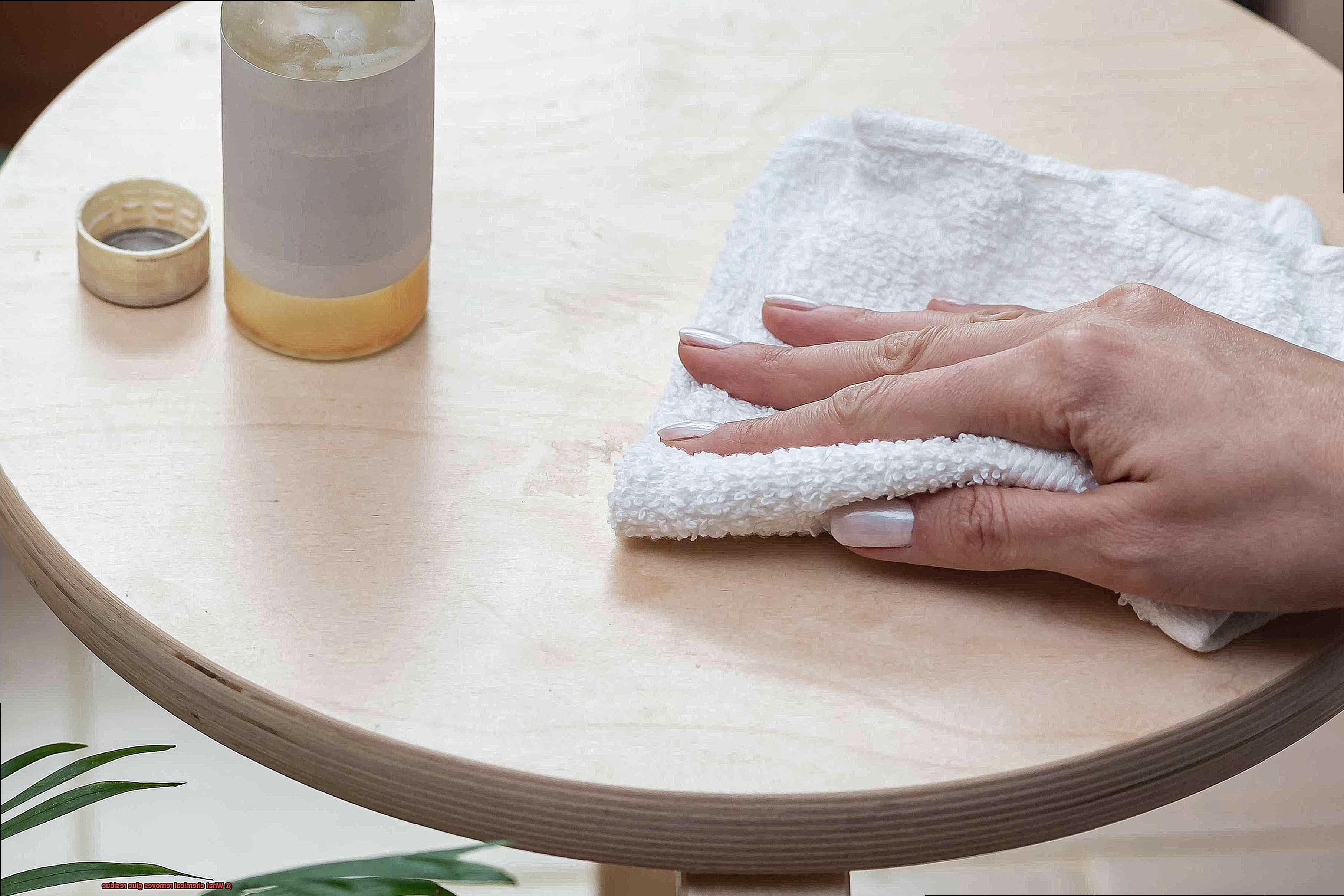
But it doesn’t stop there. Isopropyl alcohol can also be your trusty sidekick in cleaning tools or surfaces that have come into contact with glue. It breaks down the adhesive properties of the glue, making removal a breeze. Just remember to handle it with care and use it in a well-ventilated area. Safety first, my friends.
A friendly reminder – keep isopropyl alcohol away from open flames or sources of ignition, as it is flammable. We don’t want any unintended fireworks.
Goo Gone: A Commercial Product for Glue Removal
In this article, we’ll explore the remarkable world of Goo Gone, a commercial product that leaves no glue behind. Join us as we unveil the secrets behind Goo Gone’s powerful formula and its ability to conquer even the most stubborn adhesives.
Unleashing the Power of Goo Gone:
Let’s face it – Goo Gone is no ordinary cleaning solution. It’s a chemical marvel designed to obliterate all traces of sticky substances, including stubborn adhesive residues. But how does it work? By harnessing the incredible strength of carefully selected solvents.
The Magic Ingredients:
Goo Gone owes its extraordinary capabilities to its unique blend of active ingredients. At center stage are citrus oils, particularly d-limonene, known for their unrivaled solvent properties.
These oils effortlessly break down greases, oils, and adhesives, leaving surfaces pristine. But wait, there’s more. Petroleum distillates, hydrocarbon-based solvents, join the party to supercharge Goo Gone’s adhesive removal powers.
A Form for Every Need:
Goo Gone understands that different cleaning tasks require different approaches. That’s why it comes in various forms – liquid, gel, and spray. Whether you’re tackling a colossal adhesive mess or gently treating delicate surfaces, Goo Gone has you covered.
Surfaces Unharmed:
Prepare to be amazed by Goo Gone’s versatility. This magical potion can safely be used on a plethora of surfaces, from sleek glass and sturdy metal to resilient plastic, delicate ceramic, cozy fabric, and even majestic wood. Remember to follow the manufacturer’s instructions for a worry-free experience.
More Than Just Glue:
Goo Gone isn’t just a one-trick pony. In addition to its adhesive removal prowess, it effortlessly wipes away the remnants of stickers, labels, tape, and those pesky glue dots that love to linger. Goo Gone dissolves them all, leaving your surfaces impeccably clean and free from residue.
A Fresh Scent for the Win:
No one wants to be overwhelmed by unpleasant odors when cleaning up glue residue. Fear not. Goo Gone comes to the rescue with its refreshing citrus scent. Say goodbye to wrinkling your nose and hello to a delightful cleaning experience.
WD-40: Multi-Purpose Lubricant for Glue Removal
Prepare to be amazed as we unveil the secret weapon that will rescue you from the clutches of stubborn glue residue. Say hello to WD-40, the multi-purpose lubricant that’s not just for squeaky hinges and rusty bolts. In this article, we’ll delve into the incredible powers of WD-40 as it swoops in to save your surfaces from the sticky aftermath of gluing mishaps. So grab your cape and let’s dive into the extraordinary world of WD-40.
The Unstoppable Power of WD-40 for Glue Removal:
WD-40 may be renowned for its versatility, but did you know it possesses astonishing abilities when it comes to removing glue residue? This mighty lubricant contains solvents specially formulated to dismantle the adhesive properties of glue. Let’s embark on a thrilling journey to uncover how it works its magic:
Penetrating the Glue:
Prepare to witness the unrivaled strength of WD-40. With a simple spray onto the affected area, its solvents infiltrate the glue, ruthlessly weakening its bond with the surface. The result? Glue residue that surrenders without causing any harm.
Surfaces United:
WD-40 is an equal-opportunity rescuer, embracing all types of surfaces with open arms. Whether you’re battling sticky remnants on metal, plastic, wood, or even delicate fabric, rest assured that WD-40 will come to your rescue without discrimination.
The Path to Success:
Harnessing the powers of WD-40 for glue removal is as effortless as it gets. Follow this foolproof guide to ensure triumphant results:
- Spray It On: Treat your afflicted surface with a light mist of WD-40 directly onto the glue residue. Remember, a little goes a long way.
- Let It Work: Grant WD-40 a few precious minutes to work its enchantment. During this time, the solvents diligently break down and soften the glue, preparing it for easy removal.
- Rub It Out: When the waiting game is over, grasp a clean cloth or sponge and gently massage the area. Prepare to be astounded as the softened glue residue effortlessly vanishes. If necessary, repeat the process until your surface gleams with victory.
Household Items for Glue Removal
In this article, I, your expert on all things glue removal, will reveal the secret weapons hidden in your very own kitchen cabinets. Say goodbye to sticky situations and hello to pristine surfaces with the help of household heroes like vinegar, baking soda, rubbing alcohol, and vegetable oil. Let’s dive right in to discover the ultimate solutions for glue removal.
Vinegar: The Versatile Wonder
When it comes to breaking down glue residue, vinegar is the superhero you need. Soak a cloth or sponge in vinegar, then unleash its power by rubbing it over the affected area. Let the vinegar work its magic for a few minutes before wiping it away with a clean cloth. The acidity of vinegar dissolves the glue, making it a breeze to remove.
Baking Soda: The Mighty Paste
Don’t underestimate the power of baking soda in your battle against glue residue. Create a thick paste by mixing baking soda with water, then apply it to the affected area. Let it sit for a few minutes as it works its wonders. Grab a cloth or sponge and scrub away in circular motions, gradually loosening the grip of the glue. Rinse off the paste with water and wipe away any remaining residue – voila.
Rubbing Alcohol: The Solvent Savior
Isopropyl alcohol, also known as rubbing alcohol, is a powerful solvent that can dissolve glue residue with ease. Dab a small amount of rubbing alcohol onto a cloth or cotton ball, then gently rub it over the stubborn glue. Watch as the alcohol breaks down the adhesive properties, allowing you to wipe it away effortlessly. Remember to test it on an inconspicuous area first to ensure it won’t damage or discolor the surface.
Vegetable Oil: The Slippery Hero
Surprisingly, cooking oil can come to the rescue in the battle against glue residue. Apply a small amount of oil to a cloth and gently rub it over the affected area. The oil works its magic, loosening the adhesive properties of the glue and making it easier to remove. Wipe away any excess oil with a clean cloth, leaving your surfaces gleaming.
Vinegar
Fear not, for I am about to unveil the superhero hiding in your kitchen cupboard – vinegar. This powerhouse household ingredient not only banishes glue residue but also boasts a plethora of cleaning benefits. Prepare to embark on a captivating exploration of vinegar and discover why it is an indispensable weapon in your cleaning arsenal.
The Mighty Force of Acidity:
Vinegar’s secret weapon against glue residue lies in its acidic prowess. Featuring acetic acid, vinegar effortlessly dismantles the adhesive properties of glue, rendering it a breeze to remove. Bid farewell to frustrating battles with sticky surfaces – vinegar swoops in to save the day.
A Natural Solvent for the Ages:
Beyond its acidity, vinegar showcases its extraordinary abilities as a natural solvent. It dissolves even the most obstinate glue residue, leaving no trace behind. Simply pour a smidgen of vinegar onto a pristine cloth or sponge, gently rub the affected area, and behold the magic unfold. The glue relinquishes its grip, succumbing to the power of vinegar.
The Application Process Unveiled:
Harnessing the might of vinegar to eradicate glue residue is as effortless as 1-2-3. Start by applying a small measure of vinegar onto a cloth or sponge. Employ gentle pressure while rubbing the affected area.
Allow the vinegar to penetrate and loosen the adhesive for a few blissful minutes. Then, with a clean cloth or sponge dampened with warm water, wipe away the vinegar and liberated glue residue. Repeat this enchanting ritual if necessary until every last trace of glue has vanished.
The Safety Advantage Unleashed:
What sets vinegar apart is its remarkable non-toxic and safe nature. Unlike commercial adhesive removers that emit noxious fumes or harbor harmful chemicals, vinegar stands as a guardian of well-being for families. Rest assured, you can employ vinegar without fear of detrimental side effects, solidifying its status as the ultimate superhero solution.
Cooking Oil
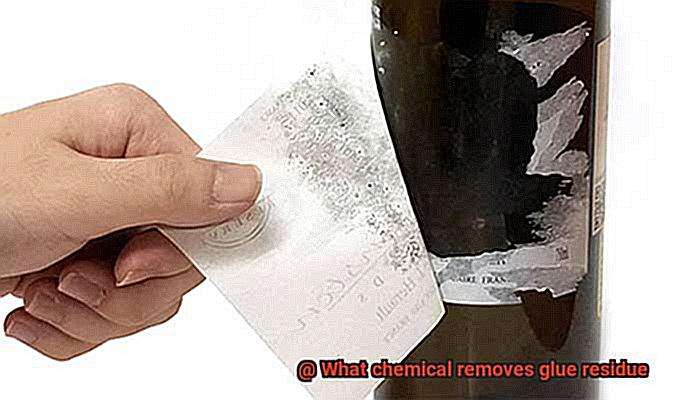
Imagine the frustration of trying to remove sticky glue residue from a surface, only to find yourself stuck in a never-ending battle. But fear not. Your kitchen holds the key to victory – cooking oil. This humble household staple not only adds flavor to your meals but also possesses astonishing powers to dissolve and conquer glue residue. Join us on this captivating journey as we uncover the hidden potential of cooking oil and how it can save the day in even the stickiest situations.
The Science Behind Cooking Oil’s Marvelous Power:
Within the realms of vegetable oil, olive oil, and coconut oil lies a remarkable compound called triglycerides – the unsung heroes responsible for cooking oil’s glue-removing prowess. These extraordinary molecules possess a unique structure that allows them to attract and bond with both water and oil-based substances, including those pesky adhesives. It is this exceptional affinity that makes cooking oil an unrivaled champion in the fight against glue residue.
The Step-by-Step Guide to Glue Removal:
Now that we understand the science behind cooking oil’s superhero abilities, let’s unveil the step-by-step guide to harnessing its extraordinary power:
- Assemble your trusted sidekick, a clean cloth or paper towel, and pour a small amount of cooking oil onto it.
- With gentle determination, rub the oil-soaked cloth over the affected area, applying just enough pressure.
- Grant the oil a few moments to work its magic by allowing it to penetrate the adhesive bond.
- Armed with another clean cloth, wipe away the dissolved residue, marveling at how effortlessly the glue surrenders.
- Repeat this process if necessary until every last trace of glue has been banished from existence.
Safety First – Even Heroes Test:
While cooking oil is generally safe for use on most surfaces, it is always wise for heroes to exercise caution. Before embarking on your mission, test the oil on a small, inconspicuous area to ensure it does not cause any damage or discoloration. Remember, even the mightiest of heroes double-check their powers.
Butter
Welcome back to our sticky situation-solving series. In our last adventure, we uncovered the astonishing abilities of cooking oil in defeating stubborn glue residue. Today, get ready to be amazed by another unexpected hero in the battle against stickiness: butter. Yes, that sumptuous, creamy spread sitting in your fridge holds the key to banishing glue residue that refuses to let go.
How does butter perform its magic, you ask? Prepare to be enlightened. The secret lies in its high fat content and oily nature, which make it an unparalleled solvent for breaking down adhesive compounds. When you gently apply a thin layer of butter onto the affected area, it springs into action, tenderly softening and dissolving that tenacious glue, making its removal a breeze.
Harnessing the power of butter is as simple as can be. Armed with a knife or spoonful of golden goodness (be generous, but not overly so), delicately spread it onto the glue residue. Then, sit back and allow it a few minutes to perform its mesmerizing work. During this time, the butter deftly infiltrates the adhesive, weakening its stronghold.
Once the waiting game is over, it’s time for action. Seize a pristine cloth or paper towel and gently wipe away the softened glue residue. The ease with which it surrenders will leave you astounded. For larger or more obstinate amounts of glue, you may need to repeat this process multiple times until every trace of stickiness has been vanquished.
What sets butter apart as your trusty sidekick in this quest is not just its efficacy but its natural and non-toxic nature. Embrace the peace of mind that comes with knowing you can employ it around your little ones and furry companions without any worries about harmful chemicals. However, do bear in mind that butter leaves behind a lingering oily residue on certain surfaces. To ensure a pristine finish, diligently cleanse the area after removing the glue.
g_HEreqZYdQ” >
Conclusion
When it comes to getting rid of stubborn glue residue, there is one chemical that stands out above the rest: acetone.
This powerful solvent has the ability to dissolve even the toughest adhesive remnants. Its effectiveness lies in its ability to break down the molecular bonds of the glue, making it easy to wipe away.
Acetone can be found in common household products such as nail polish remover and paint thinner. Just apply a small amount onto a cloth or sponge, gently rub it onto the affected area, and watch as the glue residue disappears like magic.
Safety first.

